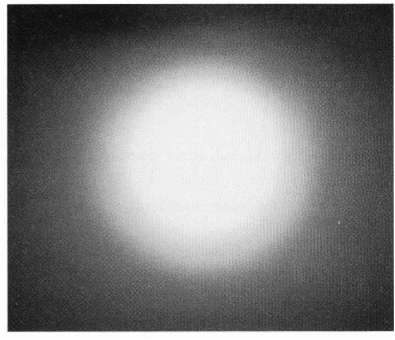A circular obstacle produces the same diffraction pattern as a circular hole of the same diameter (except
Question:
A circular obstacle produces the same diffraction pattern as a circular hole of the same diameter (except very near 6 = 0). Airborne water drops are examples of such obstacles. When you see the Moon through suspended water drops, such as in a fog, you intercept the diffraction pattern from many drops. The composite of the central diffraction maxima of those drops forms a white region that surrounds the Moon and may obscure it. Figure is a photograph in which the Moon is obscured. There are two faint, colored rings around the Moon (the larger one may be too faint to be seen in your copy of the photograph). The smaller ring is on the outer edge of the central maxima from the drops; the somewhat larger ring is on the outer edge of the smallest of the secondary maxima from the drops. The color is visible because the rings are adjacent to the diffraction minima (dark rings) in the patterns. (Colors in other parts of the pattern overlap too much to be visible.)
(a) What is the color of these rings on the outer edges of the diffraction maxima?
(b) The colored ring around the central maxima in Figure has an angular diameter that is 1.35 times the angular diameter of the Moon, which is 0.50o. Assume that the drops all have about the same diameter. Approximately what is thatdiameter?

Step by Step Answer:

Fundamentals of Physics
ISBN: 978-0471758013
8th Extended edition
Authors: Jearl Walker, Halliday Resnick





